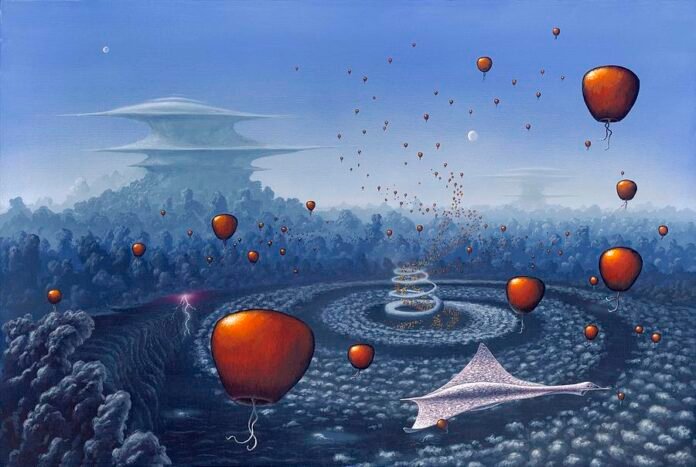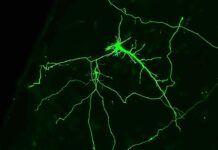The quest for the discovery of extraterrestrial life has been a fascinating and intriguing pursuit for humans for centuries. However, it is only in recent times that astrobiology has made significant strides towards understanding the origins, evolution, and distribution of life in the universe. Astrobiology is a multidisciplinary field that seeks to uncover the complexities of life beyond Earth.
In this article, we will explore some of the latest developments in astrobiology that have brought us closer to the discovery of extraterrestrial life. This includes the discovery of exoplanets, the search for biosignatures, and the exploration of our own solar system.
Exoplanets: Unveiling New Worlds
One of the most captivating developments in astrobiology in recent years has been the discovery of exoplanets. These planets are not orbiting our sun but are found around other stars in the universe. Thanks to advancements in telescopes and observation techniques, scientists have identified thousands of exoplanets, with many of them located in the habitable zones of their host stars. These habitable zones are regions where temperatures are conducive to the existence of liquid water.
The presence of liquid water is considered a key prerequisite for life as we know it. The discovery of potentially habitable exoplanets has sparked intense interest in the search for extraterrestrial life. Scientists are now studying the atmospheres of exoplanets to look for signs of biological activity, such as the presence of oxygen, which is typically produced by photosynthetic organisms.
Biosignatures: Searching for Clues of Life
Biosignatures are crucial in the search for extraterrestrial life. These are chemical or physical markers that can provide evidence of biological activity on other planets or moons. Biosignatures could include the presence of complex organic molecules, unusual ratios of certain elements, or the detection of atmospheric gases that are typically produced by living organisms.
Scientists are currently developing new techniques to detect biosignatures in the atmospheres of exoplanets and other celestial bodies, using a variety of instruments and observation techniques. The hope is that these biosignatures will provide strong evidence for the existence of extraterrestrial life, either now or in the past.
The Search for Life on Mars: Probing the Red Planet
Mars has always been a target of astrobiology research due to its proximity to Earth and its potential for hosting life. Several missions have been launched to explore Mars, including NASA’s Mars Exploration Rovers and the Mars Science Laboratory, which includes the Curiosity rover.
These missions have uncovered a wealth of information about Mars, including evidence of liquid water in the planet’s past and the presence of organic molecules in Martian soil. Although these discoveries do not provide definitive proof of life on Mars, they do suggest that the planet may have once been habitable, and that the potential for life to exist there cannot be ruled out.
The Search for Life in the Outer Solar System: Exploring Beyond Mars
Apart from Mars, scientists are also exploring the potential for life to exist on other celestial bodies within our own solar system. Moons such as Europa, Enceladus, and Titan are believed to have subsurface oceans of liquid water that could potentially support life.
Several missions are currently being planned to explore these moons, including NASA’s Europa Clipper and ESA’s JUpiter ICy moons Explorer (JUICE). These missions will study the moons in detail, looking for signs of habitability and the potential for life to exist.
Synthetic Biology: Creating Life from Scratch
While much of astrobiology research focuses on the search for life beyond Earth, synthetic biology is a field that seeks to create new forms of life in the laboratory. This cutting-edge field involves designing and building biological systems from scratch, using engineering principles and synthetic DNA. Synthetic biology has the potential to revolutionize medicine, energy production, and materials science, and could provide insights into the origins and evolution of life itself.
Although not strictly a part of astrobiology research, synthetic biology is closely related to the field, and has the potential to yield new insights and discoveries.
Conclusion
In conclusion, the search for extraterrestrial life is an exciting and challenging endeavor that continues to captivate and inspire people worldwide. The advancements in astrobiology have brought us closer than ever before to answering one of the most fundamental questions of human existence: are we alone in the universe?
The discovery of exoplanets, the search for biosignatures, and the exploration of our own solar system are all essential components of this search, and ongoing research promises to yield even more exciting discoveries in the years to come.
While definitive proof of the existence of extraterrestrial life may not yet be within our grasp, the quest itself is of immense scientific value. Studying the origins and evolution of life on Earth and exploring the potential for life to exist beyond our planet is helping us to better understand the nature of life itself and to appreciate the incredible diversity and complexity of the universe in which we live.
As we continue to explore the mysteries of astrobiology, we are gaining new insights and perspectives on our place in the cosmos, and are unlocking new opportunities for scientific discovery and exploration.
Google News | Telegram
















